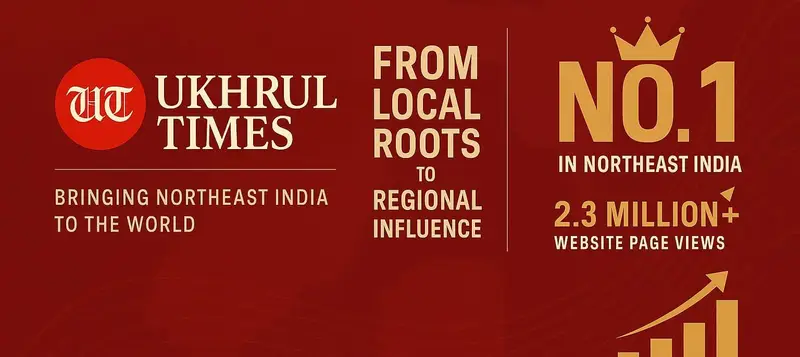Now Reading: Miscalculations on India-Myanmar Border Fencing will result in a self-inflicted wound against national interests
-
01
Miscalculations on India-Myanmar Border Fencing will result in a self-inflicted wound against national interests
Miscalculations on India-Myanmar Border Fencing will result in a self-inflicted wound against national interests

The decision of the Home Ministry to revoke the Free Movement Regime (FMR) between India and Myanmar and fence the 1640 km boundary that most of the rest of India knows little about, is based on false premises and a misrepresentation of reality.
It is also contrary to the Central government’s stated principles, policy and rhetoric of ‘Neighborhood First’ and ‘Act East’ to foster closer trade, connectivity and people-to-people ties with Myanmar and Southeast Asia. They mark a remarkable reversal of our border movement regime with Burma/Myanmar that has been in existence since colonial times amounting to a virtual sealing of our neglected 1600 km border with a civilizational neighbour.
The FMR evolved in recognition of the artificial and arbitrary nature of colonial boundaries and the close traditional, customary and kinship ties of cross-border tribal communities through the ages.
Related | Modi govt to go ahead with 1643 km Indo-Myanmar border fencing: Amit Shah
Although it was Britain that drew the boundaries between India and then Burma after the Treaty of Yandabo in 1826 when the British took control of Assam and Manipur (along with other territories that it had wrested from the Burmese Konbaung dynasty after the 1st Burman War), they understood that any attempt to restrict cross-border ties and movement between divided ethnicities would invite trouble.
This was also recognized by independent Burma in the revision of their passport rules in 1948 and by India in 1950 (with some variations in distance and days). It survived the exodus of people of Indian origin and Burmese dissidents in large numbers after Gen. Ne Win’s military coup of 1962 as well as the suppression of other pro-democracy movements since then, notably in 1988; the formal demarcation of the India-Burma boundary in 1967; and the cross-border dimensions of the Naga, Mizo, Meitei and later, Assam-based insurgencies since the 1960s. It became an exhibit in the gradual thawing of relations with the military junta around the turn of the millennium, our Look East policy in the 1990s and Act East policy since 2014. Despite several challenges, most of all insurgencies in the Northeast, there were few complaints about its misuse or demand for its reversal or revocation, until now.
Ironically, the FMR that had been in operation by both sides more or less unilaterally since then in variations and degrees, was harmonized and formalized by the present government in January 2018 in its current form to take into account security concerns, reciprocity and the overall evolution of our relations with Myanmar through the northeastern region of India. A press release issued by the PIB explains the Agreement as intended to regulate and harmonize the “existing free movement rights for people ordinarily residing in the border areas of both countries”, “enable movement of people”, “provide connectivity”” enhance interaction of people of the North-Eastern States of India with the people of Myanmar”, “give a boost the economy of the North East”
“, and “leverage our geographical contiguity with Myanmar to boost trade ad people-to-people ties”. specifically states that the Agreement “will safeguard the traditional rights of the largely tribal communities residing along the border which are accustomed to free movement across the land border”
Opinion | Encompassing Manipur-centric problem solving approach, rather than Meitei-centric
Seeing the potential of the 16 km FMR to promote Manipur as India’s ‘gateway’ to South East Asia, it was also being informally stretched by state authorities and businesses as far as Imphal (until recently) to strengthen medical, commercial and people-to-people ties between Myanmar and India and Imphal in particular, along with much talk about physical, commercial and people-to-people connectivity all the way to Bodh Gaya, a major pilgrimage destination for predominantly Buddhist Myanmar. Few states bordering Myanmar benefitted from it as much as Manipur as the most convenient land route between India and Myanmar. That policy is now being upturned without any serious debate under pressure from the same government of Manipur even as it tries to wrest control of the border trading town of Moreh from the Kuki-Zo after the reciprocal ethnic cleansing of May 2023, by force.
If the lifting of the FMR is historically and politically illogical, the fencing of the border is even more questionable. Although there are several conceivable reasons why border fencing could be resorted to: to contain any spillover of the anti-military conflict in Myanmar in the form of refugees or militancy; prevent a growing illegal and informal trade in drugs, gold, betel nuts and timber; tackle Valley-based, Naga and Assam-based Indian Insurgent Groups (IIGs) sheltered in Myanmar; or combat allegations by the Manipur state government of ‘illegal migration’ of Kuki-Zo or ‘external aggression’ by kindred militant groups on the other side of the border, many of these are misconceived, and in any case will not be addressed by fencing.
Rather, border fencing across 1,600 km of mountainous and forested terrain prone to landslides will require heavy investments in men and machinery to construct and maintain. It will incur huge costs in erecting, patrolling, monitoring and surveillance besides unquantifiable environmental costs in ecologically sensitive ranges. More importantly, they will have to be implemented in tribal areas inhabited by diverse Naga, Kuki-Zo, Mizo and eastern Arunachal tribes who will resolutely oppose fencing through their tribal lands. Already, state authorities in Mizoram and Nagaland, as well as tribal bodies in Manipur and elsewhere are speaking out or issuing statements against it. Even if only partially implemented in Manipur where the demand is coming from, it will be seen as a ploy to land the central government into conflict with the Kuki-Zo tribals over land acquisition and aggravate an already explosive situation. It is inexplicable that the central government is not cognizant of this and is still proceeding with it.
Editorial | Manipur state does not begin and end in Imphal
Substantively, while the conflict in Myanmar is serious, it is an entirely internal conflict whose impact on India, despite an estimated 40,000 refugees mostly absorbed by Mizoram, is minimal. Illegal and informal trade has grown, but the real reasons for that lie in the lack of trade, customs and enforcement infrastructure on the border, and the lack of political will or state complicity in such trade after the transition from border trade to MFN trade in 2016. The IIG problem has been around for over 60 years and has been much worse at different times; yet, although there were demands to erect fencing in some sections, these had more to do with turf battles and competing models of border management between the Assam Rifles and Border Security Force (BSF) and central preferences, than as solutions to the problem. Except in Manipur, where they have sharply increased with the outbreak of the ethnic conflict there since May, the government has in fact achieved considerable progress in bringing many of these IIGs into Suspension of Operations, talks and accords.
The reality is that the decision to lift the FMR and fence the India-Myanmar border is a byproduct of the current conflict in Manipur between the state government and the majority Meitei community on the one hand and the Kuki-Zo-Hmar-Zomis who inhabit the peripheral hills to the south, east and north on the other. They are driven entirely by the Manipur government’s narrative about ‘illegal migration’ and ‘external aggression’ by Kuki-Chin from Myanmar and by radicalized Manipuri Meiteis as part of their ‘national war’ against the Kuki-Zo-Hmar-Zomi who they project as ‘foreigners’ and ‘narco-terrorists’. The evidence for these allegations is slender.
Also read | Fresh Violence in Manipur; Firing reported in areas under Maphou Dam Police Station
It would appear that the Centre either believes or has fallen hostage to this narrative of the Manipur government at the expense of the other states and affected tribals in Manipur and elsewhere. It will reinforce the growing impression among the Kuki-Zo of Manipur that the Centre is tacitly backing the state government’s ethnic agenda. Its consequences could be fateful. Its implementation will drag the Centre into what is essentially an ethnic conflict in Manipur; but it will also needlessly alienate and create tensions with North East tribals who share cross-border ethnic and kinship ties such as the Mizos, the Kuki-Zo and Tangkhul Nagas of Manipur, Nagas of Nagaland especially the eastern Nagas who have kith and kin on the other side, and tribes of eastern Arunachal Pradesh that successive governments in Delhi have been careful to keep on their side.
Must read | Naga Students’ Org Myanmar Condemns Draconian Measures; calls FMR GoI’s Assault on Naga Sovereignty
Further, it will also alienate friendly but already restive kindred tribes on the other side who are fighting their own war against the Myanmar military and who we have tried to win by investing large sums in trade promotion and border area development projects besides the FMR.
In the end, the kinship and tribal ties are such that they will not be curbed by the measures. Rather, the same kinship that binds them to their fellow tribals in India could be turned against us. Given their cross-border distribution, it has the capacity to spill over both internal and international borders due to miscalculations of the Indian state and/or ethnic and tribal resistance groups. If the government thinks it can prevail over such a scenario through its far superior military force, it would have learnt nothing from the ethnic resistance to the military in Myanmar or even the Naga and Mizo insurgencies in the Northeast that were managed at great human and reputational cost.
Opinion | Where is Manipur headed?
On the other hand, as they gain territory against the military junta, as is already happening with the Arakan Army in Rakhine and Chins in Chin state of Myanmar and is likely to extend to Kachin state and Sagaing Region, they will become our de facto neighbours. It is in our interest to develop ties with them. We will be doing just the opposite and opening them to overtures from others.
Ultimately, it will hurt the ruling party and the government politically. It will reverse the impressive connectivity and economic gains for the border states and the northeastern region in general under the Modi government, and severely damage our Act East policy. If pursued, it will result in a self-inflicted wound against our national interests. The Centre cannot be unaware of, or indifferent to this. It is hoped better sense prevails.

Gautam Mukhopadhaya
(Courtesy: DEECAN HERALD. The author was India’s ambassador to Myanmar from 2013 to 2016. Views are personal.)
This is not a Ukhrul Times publication. UT is not responsible for, nor does it necessarily endorse its content. Any reports or views expressed are solely those of the author or publisher and do not necessarily reflect those of Ukhrul Times.
Features | A Strong and Good Hearted Thai Lady’s Journey to Manipur

















